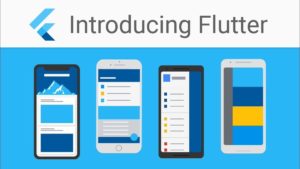One of the primary concerns of mobile marketers across the world is ensuring that they have the ability to produce content and apps that are compatible with a range of platforms. However, their two top priorities are undoubtedly creating items that work on both Android and iOS.
The two operating systems dominate the market, with figures from Q2 2018 suggesting that Android OS accounts for an 88 per cent share and iOS holds around 11.9 percent. While the likes of Microsoft and RIM once had a place in this world, they have fallen by the wayside as Google and Apple’s unstoppable creations have marched to the top.
A number of differences
While the pair are now truly out on their own in terms of their performance in the market, they are different in a number of ways. For example, as this VPNbase article on the best Android VPN services outlines, Android devices are seen as less exclusive and arguably more flexible than Apple’s iOS-based alternatives. While the site states this is a “wonderful thing”, it does also warn that this can open Android systems up to a range of risks.
On a more technical level, another key difference is how apps for the two systems are created. While iOS apps are stored on a file type known as an IPA, Android apps use the format known as APK. This issue, in particular, has caused a headache for many businesses in recent years, as this has meant it is not necessarily easy for them to quickly adapt apps for one OS to another.
However, could a major new toolkit created by developers at Google be about to change the game in this regard?
Introducing Flutter
At the start of December, Google announced the launch of its first stable release of the UI toolkit known as Flutter. The company describes the system as a way to build ‘beautiful, native experiences’ for both iOS and Android systems using a single codebase.
While this does not replace the traditional way of creating apps for the two operating systems, it is an engine that can be added to an existing app or used in a completely new one. Google said that Flutter’s set of widgets would ensure a “pixel-perfect experience” on both OSs, ensuring designers are able to achieve their vision without having to “water it down” due to any limitations.
The key benefits of Flutter were highlighted in comments from Capital One’s senior director of engineering Michael Jones, who said the service would mean the company can now think about features “not in an ‘iOS or Android-first’ fashion, but rather in a true mobile-first model”.
Exciting new development
The release of Flutter is an exciting development which could change the game for everyone involved in mobile marketing, with hopes being high that it will make it easier for developers to create apps for both iOS and Android.
While the two biggest mobile operating systems in the world have fundamental differences, Google’s new toolkit has arguably brought them closer than they have ever been before.
